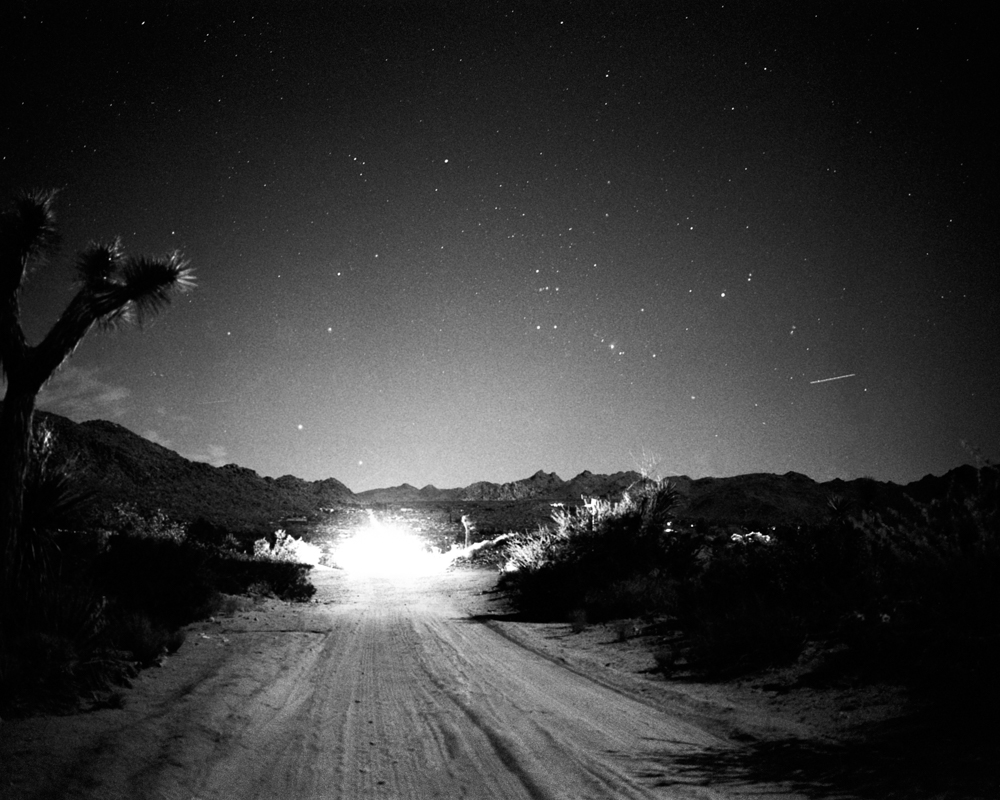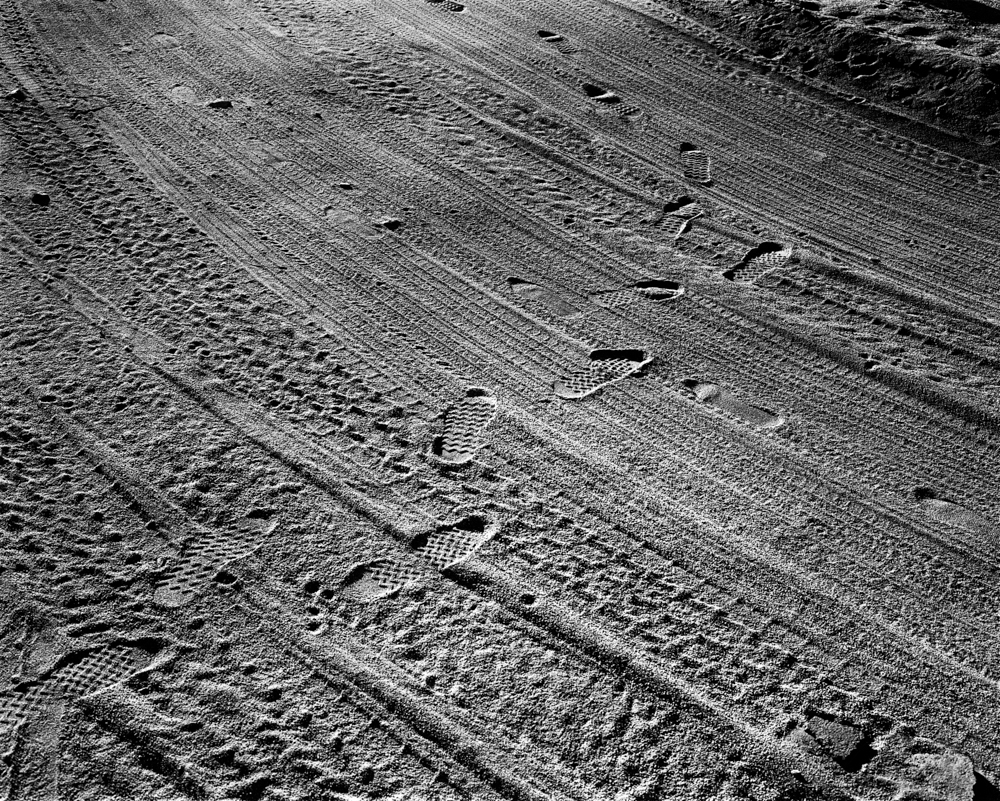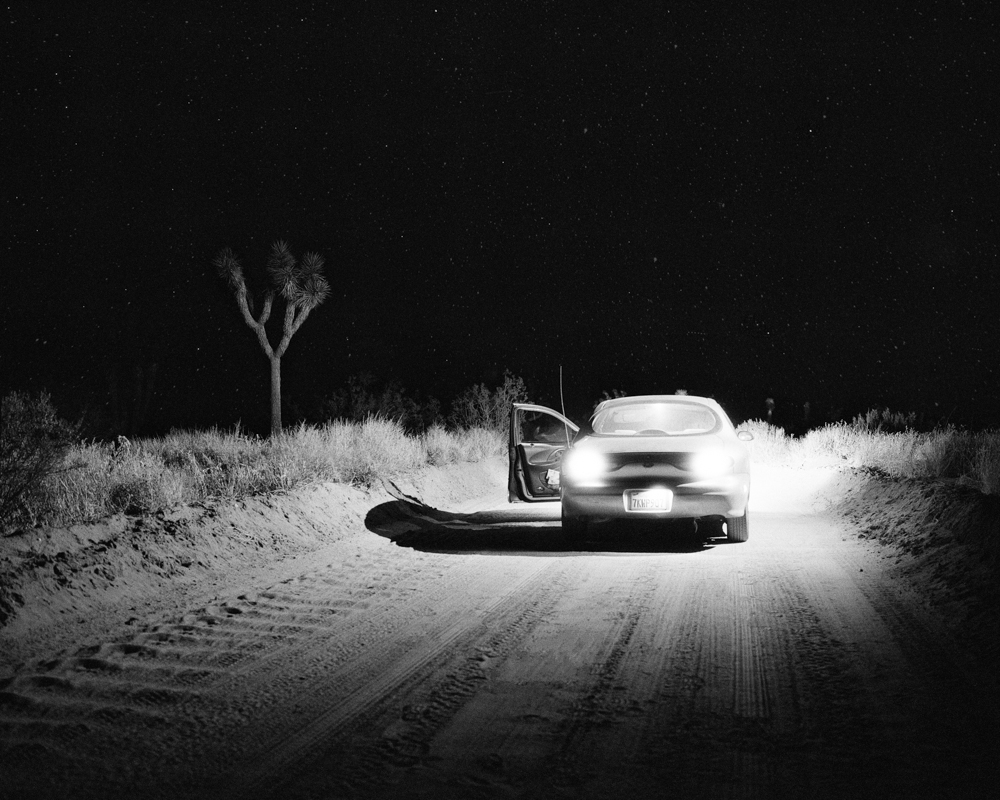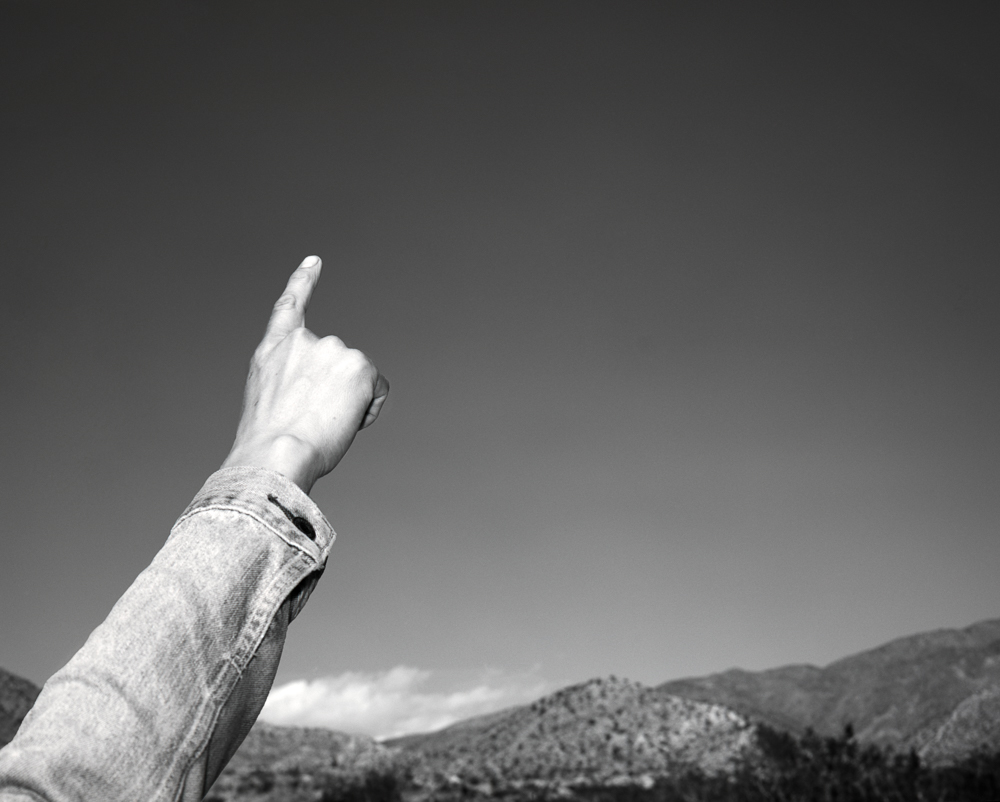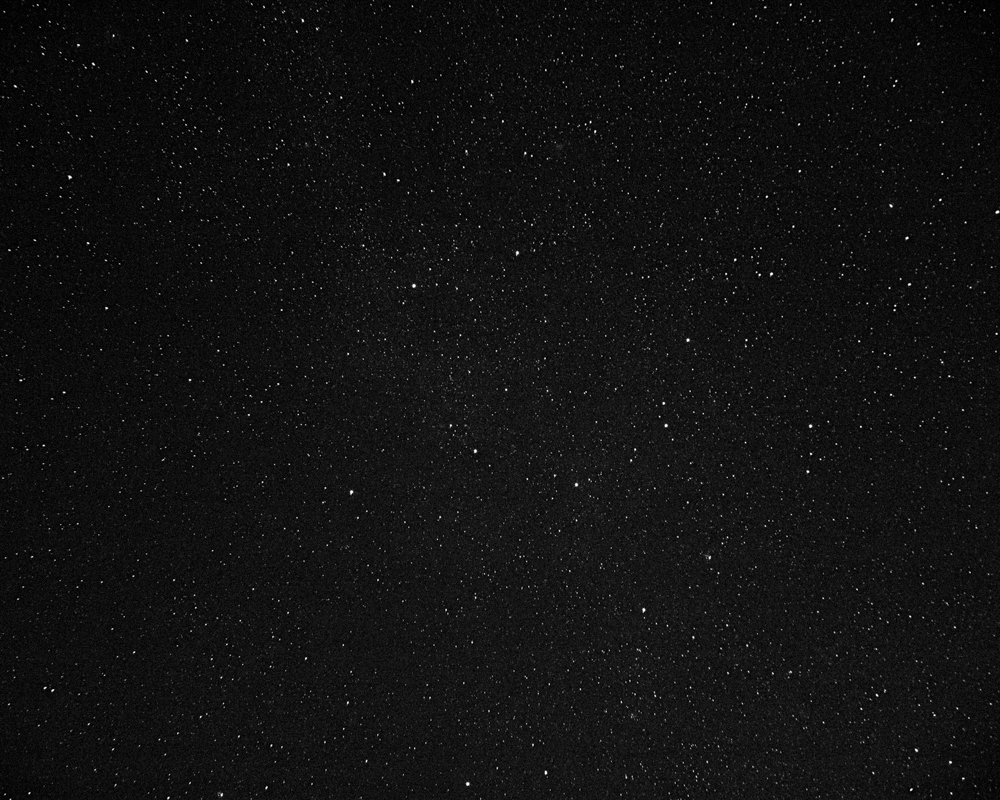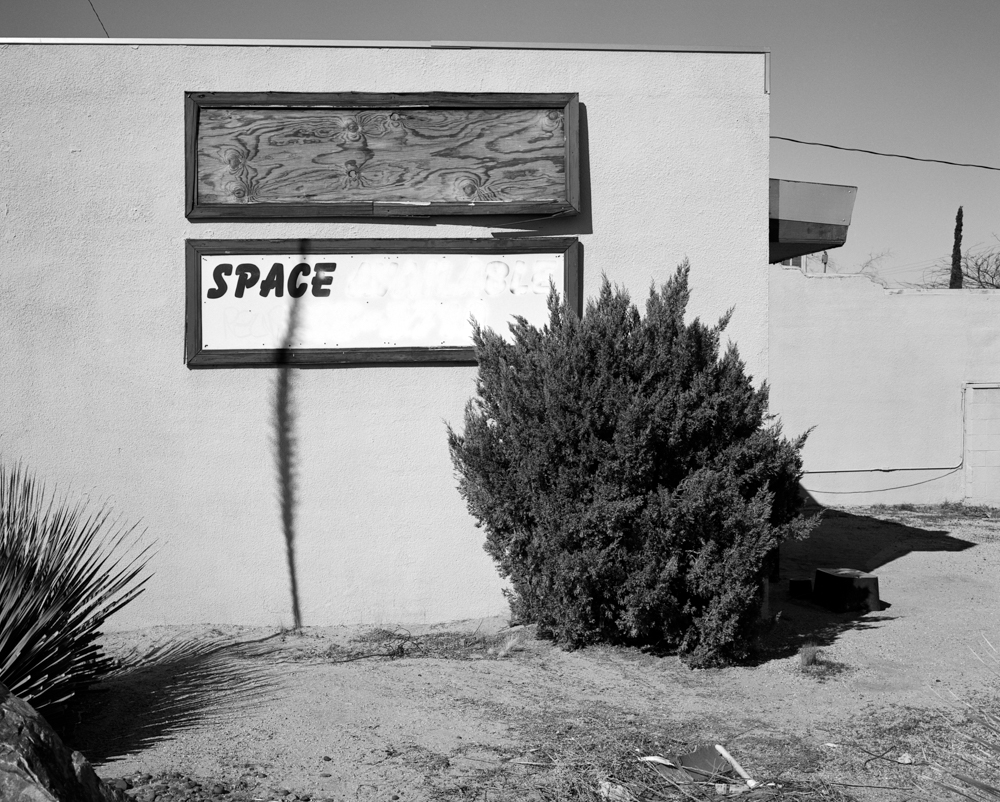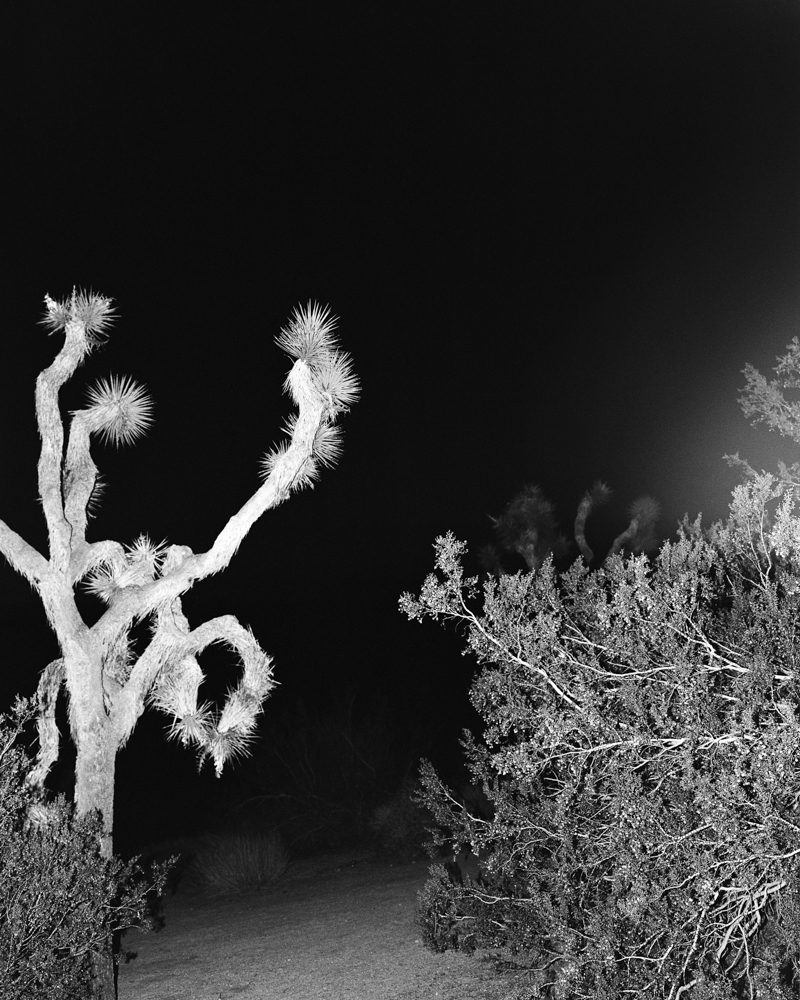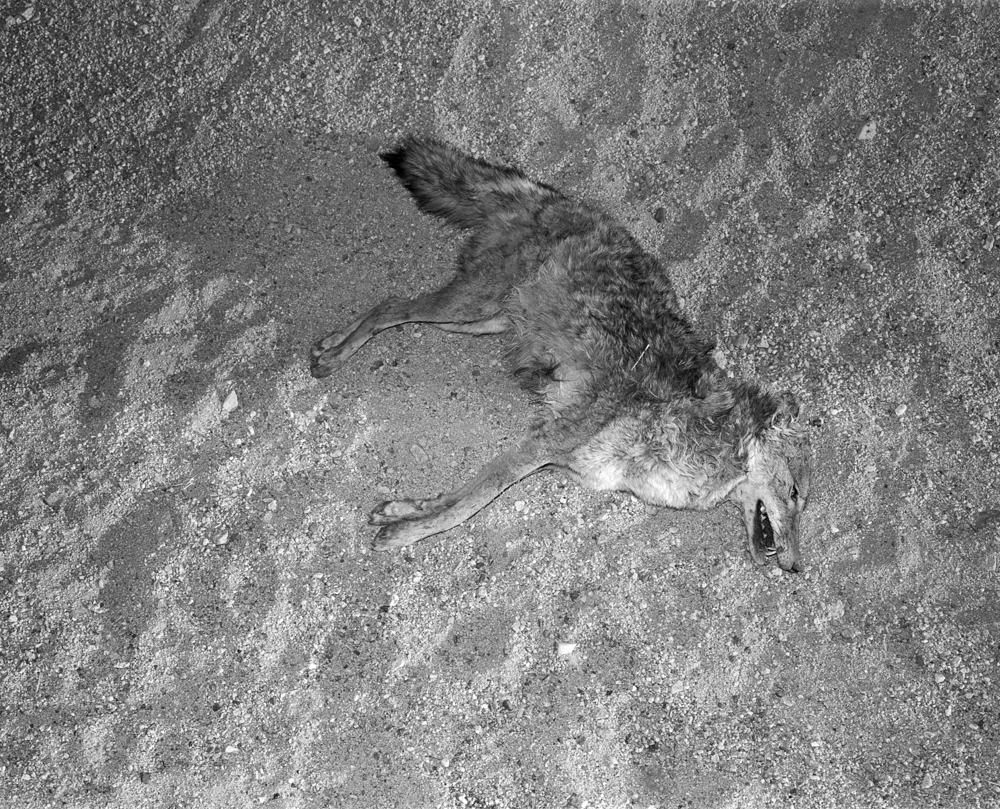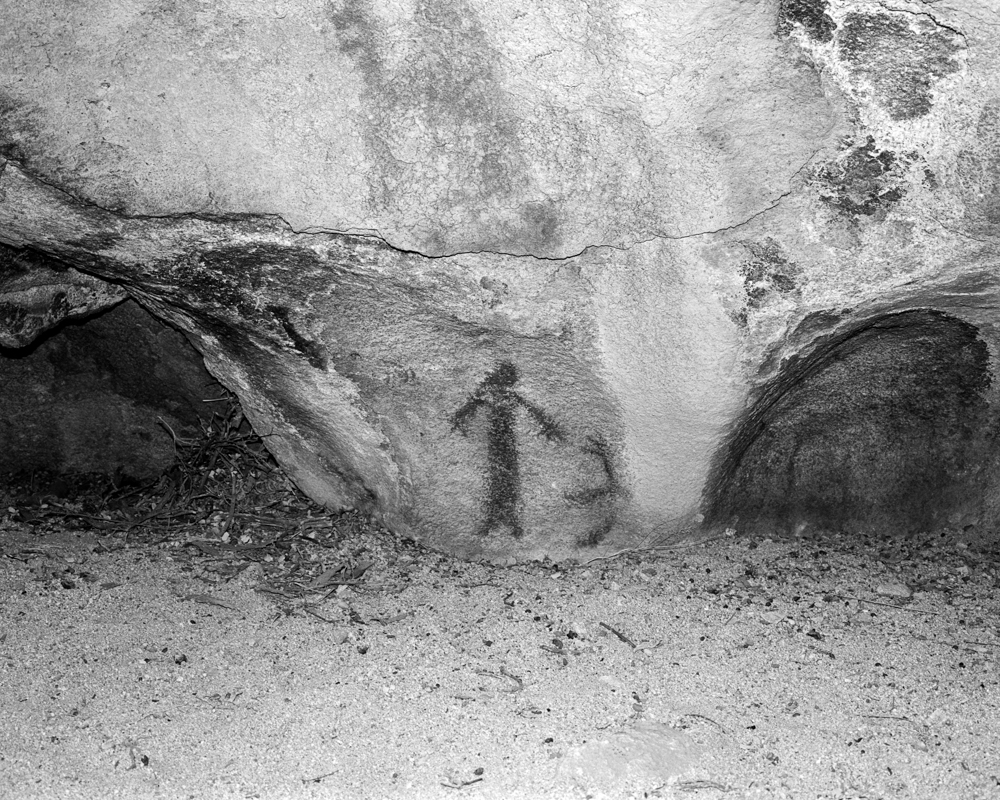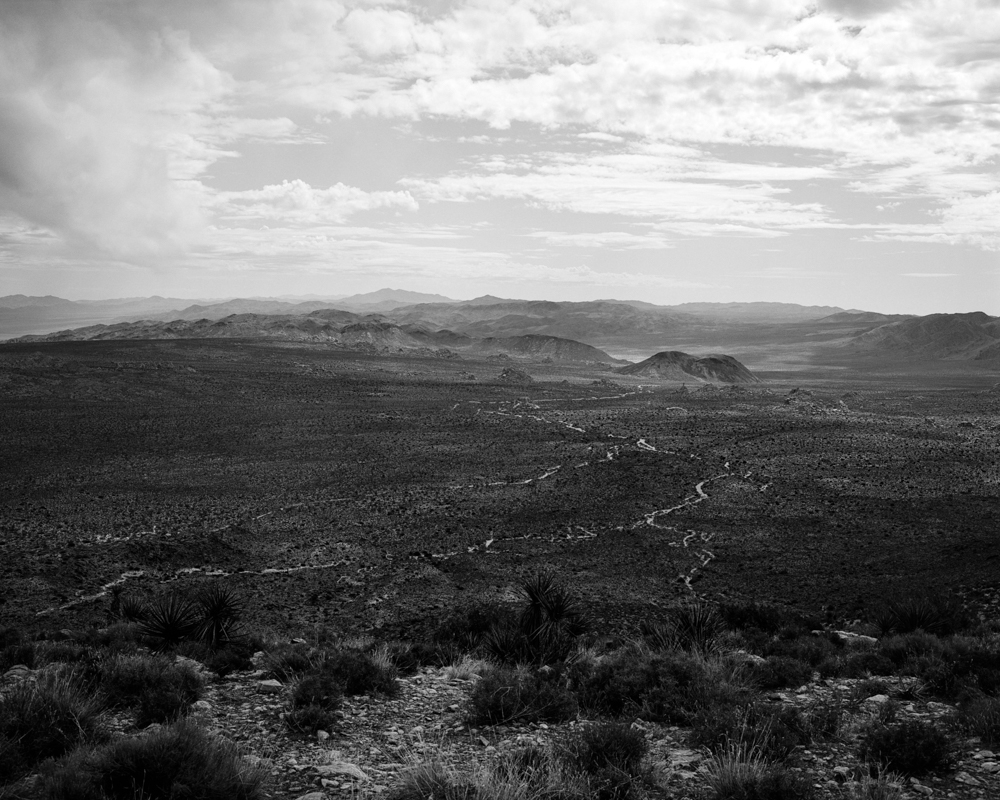Makenzie Goodman: Encounters
Last year, I saw Makenzie Goodman’s “Encounters” while she was in the process of becoming my colleague and an assistant professor at Appalachian State University. I was struck by the abstraction of the imagery, which allows room for interpretation. While some individual images are presented as evidence of extraterrestrial life, others are less clear and more open to skepticism. The series as a whole creates a sense of vastness and mystery through its use of light, space, and the Mojave Desert as the backdrop. Goodman presents various perspectives on extraterrestrial sightings in the American Southwest.
Makenzie Goodman is a research-based artist living between North Carolina and Texas. She works in photography, video, and installation to question belief systems associated with specific geographic places and often creates in collaboration with other artists and within communities. Her work considers the histories, narratives, and myths of a region to explore the way humans interpret and interact with the spaces they inhabit, and what that often-imposed anthropocentric relationship means for the land. Goodman is currently an Assistant Professor of Photography at Appalachian State University
Follow on Instagram: @makenzelyn
Encounters considers the experiences of individuals in the Mojave Desert who claim to have come into contact with UFOs. The work addresses a belief system associated with a particular place in the American desert. A creed in which the believer’s experiences are not so different from spiritual encounters that have been retold throughout history. While science provides ample data to suggest the statistical likelihood of other life in our universe, the theories of those who claim to have experienced this existence firsthand are often considered fringe or conspiracy driven. This project questions traditional values, shared experiences, and belief systems in a particular place, and holds space for multiple perspectives.
Tell us a little bit about your childhood and how you became a photographer?
I grew up on a farm in rural-ish western Pennsylvania. I played outside a lot and explored the creeks and pasture behind my house with my sister. Art wasn’t a big part of my life early on but reading and writing were. When I was young, I imagined I would be a creative writer, later a journalist, so I think from an early age I was interested in narrative and telling stories and observing and thinking about the world. Once I discovered the photo darkroom in college, my focus shifted and all thoughts of being a writer went out the window. I also did a brief but impactful stint as a wildlife researcher, getting me outside a lot, a place I love to be.
Talk about Encounters and how it came about?
In late 2016 I was living in Los Angeles. Through one of the many odd jobs I had at that point in my life I got to spend a significant amount of time in Death Valley helping to archive and store an historic art collection in the National Park. On a hike I met a researcher from SETI Institute (Search for Extraterrestrial Intelligence) who was camping out near Ubehebe Crate. She told me that there were places on earth that were similar to the surface of Mars and several were in the Mojave desert. She added that there was a high rate of reported UFO (now UAP) sightings in this region and hinted that it was likely not coincidence. Most of my projects begin with a deep dive into the history, mythology, and connection that humans make with particular places, so it is needless to say that from that point forward UFO accounts in the Mojave dominated my thoughts.
It wasn’t until the fall of 2019 when my partner Adam Stacey, a sculptor, and I got the opportunity to do a residency in Joshua Tree. There we choose to focus on meeting individuals who claim to have had UFO experiences. That five-week long residency was just the beginning and over the course of the last four years, despite multiple cross-country moves, we have been able to come back to the Mojave area to continue making work about the desert and the folks who believe they’ve seen something unexplainable.
Why do you think UFO sighting are prevalent in the desert?
Hmmm… I’ve thought about this a lot. To be sure, plenty of people have claimed to see UFOs all over, not just dry areas- people want to believe! That said, it does appear sightings seem to be more common in desert areas, the Mojave being just one example.
I have a few ideas why. The first is that deserts are harder to create big centers of commerce, they are extreme places to live. Because of this there are generally a lot less people and less infrastructure obstructing the sky, less lights, so darker night skies (although many sightings I’ve been told about happen during the day), and perhaps it is just more conducive to looking up. Also, because of the extreme living conditions, deserts, in my experience, seem to attract more eccentric individuals, perhaps more open to believing in the existence of supernatural. I do consider myself kindred to this group.
A final theory I’ve heard, specifically about the Mojave desert is it’s proximity to 29 Palms military base, the largest Marine training base in the world. Some suggest that new wartime technologies could explain the sightings, while others say UFO sightings are common around military bases for other reasons?
Discuss your experience with the eyewitnesses for these firsthand accounts.
We used Craigslist classifieds to find folks that wanted to participate and because of this there was a huge variety of responses. On one end of the spectrum, we had people that seemed completely cagey and suspicious about sharing anything with us, won the other end there were people writing page-long messages recounting the dozen or so UFO encounters they had all over the country, along with all the other cryptids and ghosts they had seen throughout their life. Because of this when we started to interview participants, I expected them to be a little “out there”. What I found was quite the opposite. The people we met were relatable, easy to talk to, and generous with their time. Listening to their experiences I found them to be sincere and trustworthy. One thing I noticed was that there was a common theme running through each experience, and that was that the UFO encounter was always marked by light, whether that be a bright flash or an enveloping white light, light always played a central role in the sighting. This made me think of photography and spiritual experiences and epiphanies.
Describe your approach to creating the poetic images for this project.
Most of the night-time images are based on UFO sightings that were described to me. Sometimes, the description of encounters from one individual overlapped with a part of someone else’s story or with a more well-known encounter. The car image, Untitled (Abduction), is based on a story Ken Lane told to us in an interview but is also loosely based on the Barney and Betty Hill abduction incident from the 60s. I don’t generally stage photos, so these images pushed me out of my comfort zone and ended up being a lot of fun. I worked with various light sources and film speeds to get the images how I wanted. There was a lot of experimentation and failure, and it allowed me to bring my collaborator and partner into the process, as Adam would help hold the lights at impossible angles or trigger flashes, often balancing on a ladder in the dead of night in the middle of the desert. It was a lot of fun.
The other photographs are more generally about the region. They are an attempt to describe how strange this landscape not only looks with it’s otherworldly plant life and boulders but also how it can just sometimes just feel eerie in the Mojave. Some of these images are meant to be a bit tongue in cheek. I wanted the work to feel open, not trying to prove anything or anyone’s experience – it was important to have space for the believers and skeptics alike. The images are meant to be considered as a group. To take one of these images on their own you might not think UFO immediately, or at all. I hope together the images start to get at some of these ideas, while still leaving room to make other connections.
What is next for this project?
Well, we just had a show of a selection of both the photographs and the sculptures at Tiger Strikes Asteroid in Los Angeles and earlier in the year National Monument Press published a booklet of the photographs, along with some text excerpts from the interviews, as part of their Dodeca Meters project. In a lot of ways, it feels like sadly I may be done making work about UFOs for the time being, but another part of me enjoyed the act of creating this body of work so much, I don’t know if I will ever be fully finished. Also, it has got to be one of the most fascinating, expansive topics- so who knows?
Posts on Lenscratch may not be reproduced without the permission of the Lenscratch staff and the photographer.
Recommended
-
Salua Ares: Absense as FormNovember 29th, 2025
-
Ricardo Miguel Hernández: When the memory turns to dust and Beyond PainNovember 28th, 2025
-
Pamela Landau Connolly: Columbus DriveNovember 26th, 2025
-
KELIY ANDERSON-STALEY: Wilderness No longer at the Edge of ThingsNovember 19th, 2025
-
Jackie Mulder: Thought TrailsNovember 18th, 2025

